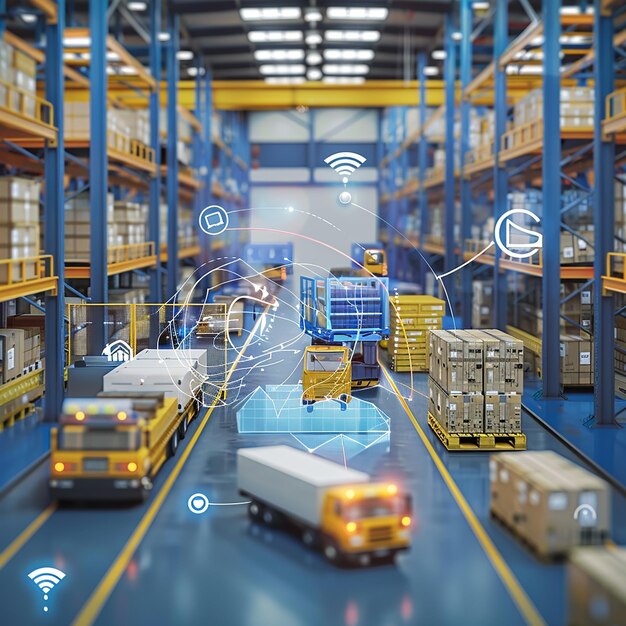Let’s imagine for a moment the journey of a simple package from the moment we buy it online until it arrives in our hands. Behind that seemingly simple trip hides a complex and fascinating world, governed by its own language. For the uninitiated, terms like “last mile” or “cross-docking” may sound like incomprehensible jargon, but in reality, they are the key pieces of a gear that keeps global commerce alive.
It all begins in the warehouse, the beating heart of distribution. Here, efficiency is measured in processes like picking and packing, which, while they sound technical, simply describe the art of finding and preparing our order as quickly as possible. To manage this choreography of goods, companies use a WMS (Warehouse Management System), a digital brain that knows where every product is and optimizes every movement.
Once the order is ready, the journey begins. It is here that one of the most discussed terms today appears: the last mile. It refers to the final leg of the shipment, from the distribution center to our door. It is the most costly and visible stage for the customer, where a single delay can overshadow the entire previous chain. For cargo that doesn’t fill an entire truck, LTL (Less Than Truckload) is used—an intelligent solution that combines shipments from different clients in the same vehicle to reduce costs.
Technology is the great ally in this dance. Systems like EDI (Electronic Data Interchange) allow companies to communicate with each other without paper: invoices and shipping data travel instantly and automatically. Meanwhile, inventory management seeks the perfect balance: having enough stock to meet demand, but not so much that capital is tied up. A brilliant concept for this is JIT (Just in Time), a philosophy that aims to receive materials precisely at the moment they are needed for production or distribution, minimizing stored stock.
When operations become too complex, many companies opt for logistics outsourcing, that is, delegating these tasks to external experts. These strategic partners often use techniques like cross-docking, where newly arrived merchandise is transferred directly from one truck to another, without going through the warehouse. It’s like a speed relay that reduces time and storage costs.
In the international arena, the rules of the game are set by Incoterms. These terms, such as FOB or CIF, are crucial because they clearly define how far the seller’s responsibilities and costs go, and how far the buyer’s go. They prevent misunderstandings and are the invisible legal framework that enables the safe flow of goods between countries.
Finally, logistics also looks backward. Reverse logistics manages the return journey of a product: returns, repairs, or recycling. It is a process that is gaining importance in a circular economy and demonstrates that a product’s life cycle does not end when it reaches the consumer.
In short, understanding this basic glossary is not just an exercise in curiosity. It is unveiling the invisible architecture that underpins our daily lives. From the most trivial purchase to the most sophisticated production chain, these terms are the threads that weave the fabric of modern commerce. Mastering them, even at a conceptual level, makes us more informed citizens and consumers in a world that, literally, never stops moving.
Have any thoughts?
Share your reaction or leave a quick response — we’d love to hear what you think!





